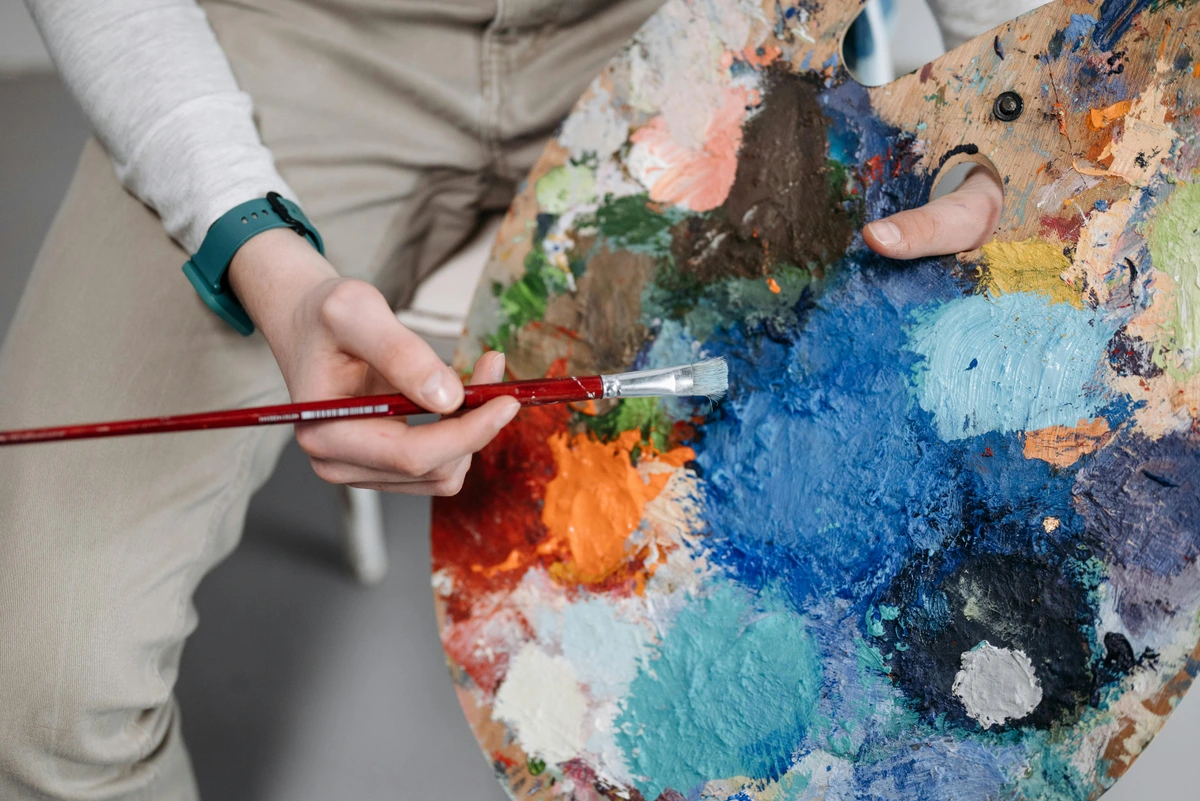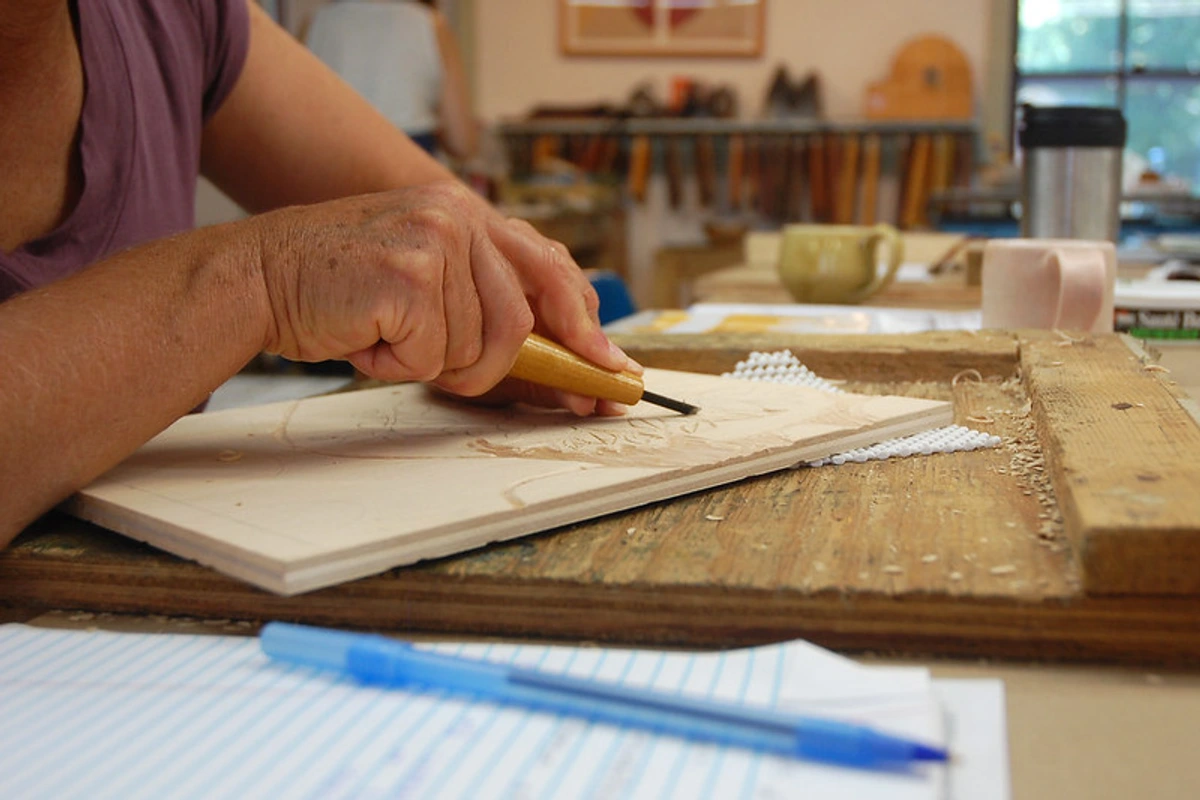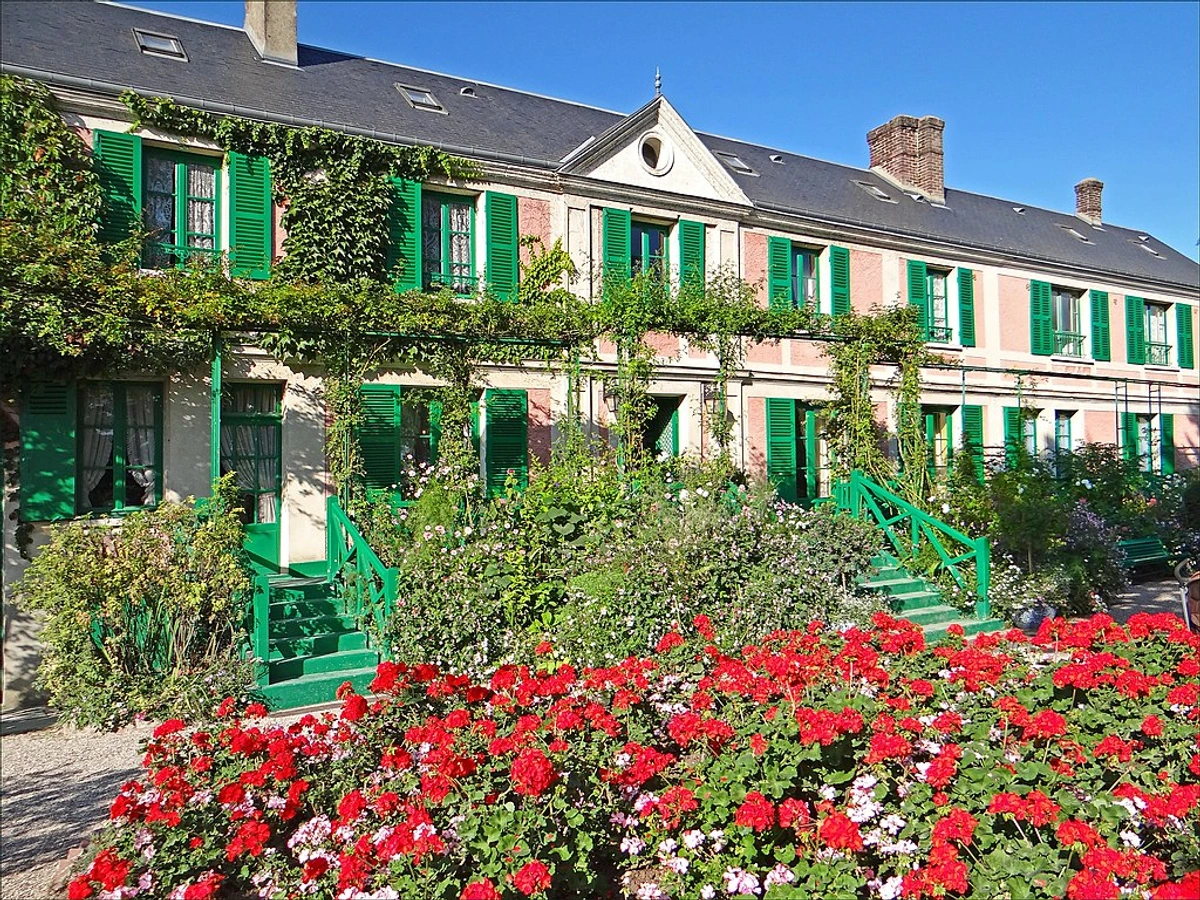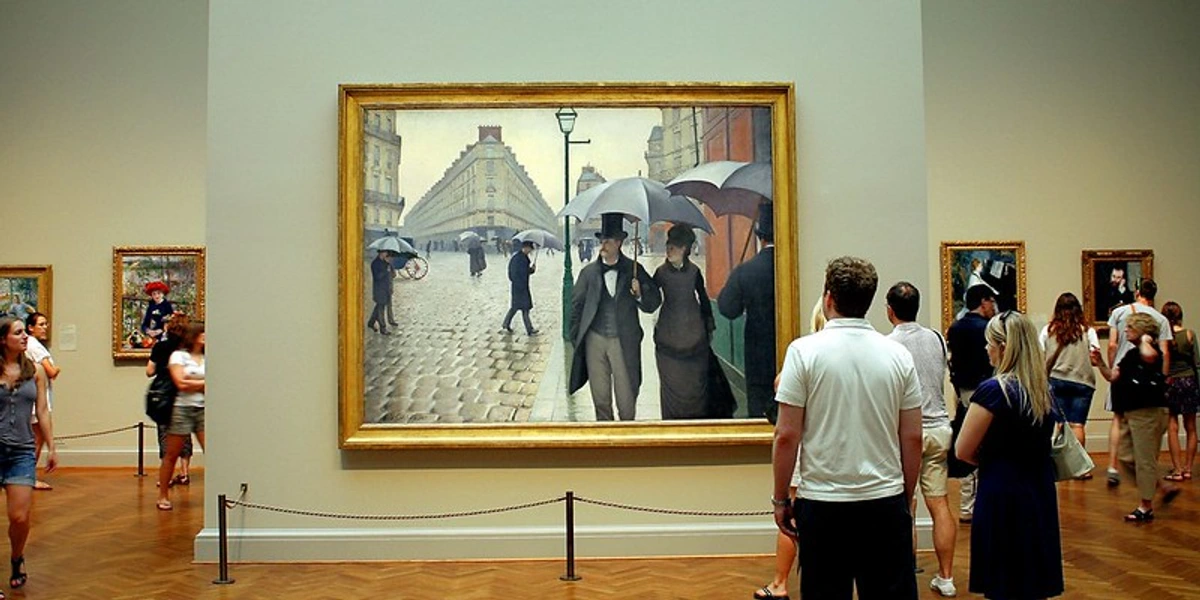
Claude Monet: An Artist's Journey Through Light, Color & Impressionism
Dive into Claude Monet's world through an artist's eyes. Explore his rebellious start, revolutionary techniques, the impact of light, iconic series, Giverny, and his enduring legacy, with personal insights and expanded details on his life, influences, and the Impressionist movement.
Claude Monet: An Artist's Personal Journey Through Light, Color, and Impressionism
Have you ever stood in front of a painting and felt... transported? Not just seeing a scene, but feeling the air, the light, the very moment the artist captured? For me, that often happens with Claude Monet. His work isn't just paint on canvas; it's a window into a fleeting sensation, a celebration of the world as it dances in light.
As an artist myself, I find myself returning to Monet again and again. Not to copy him, mind you (though who hasn't tried to capture light like that?), but to understand the why behind the brushstrokes, the dedication behind the seemingly effortless beauty. He wasn't just painting landscapes; he was painting the experience of seeing them. And that, my friends, is a whole different ballgame. I remember one frustrating afternoon trying to capture the exact shade of green in a sun-dappled forest – it felt impossible, a constant shift. Thinking of Monet's relentless pursuit of light in his series paintings always puts that struggle into perspective. It's a quiet obsession, this pursuit of capturing something true about seeing, a journey I understand on my own artist's journey.
This isn't your dry art history lecture. This is my personal dive into the world of Monet, filtered through the eyes of someone who knows the struggle of mixing the right green or capturing that perfect sunset glow. Let's explore the man who helped change the way we see art forever.
Who Was Oscar-Claude Monet, Anyway? A Rebellious Start
Born in Paris in 1840, Oscar-Claude Monet wasn't exactly a child prodigy in the traditional sense. His family moved to Le Havre when he was five, and it was there that he first gained recognition, not for painting, but for his witty caricatures. These early works, often satirical, showed a keen eye for observation and a willingness to capture the essence of a subject quickly – skills that would later serve him well in capturing fleeting moments of light. He even earned a bit of money from them, which, as any artist knows, is a small victory in itself! He'd often sketch local figures, sailors, or bourgeois types, honing his ability to quickly observe and render form and character – a foundation for capturing the 'impression' of a scene.
Monet's father, a grocer, initially wanted him to go into the family business, and he wasn't supportive of young Claude's artistic ambitions. This early resistance from his family added another layer to his rebellious nature. Despite this, Monet persisted, eventually making his way to Paris to study art. His early days in the city weren't easy; like many aspiring artists, he struggled financially and felt constrained by the traditional academic teaching methods. I know that feeling well – the pressure to conform, the frustration with rigid rules when all you want to do is experiment and find your own voice. It's a common hurdle on the artist's journey.
His path shifted significantly when he met Eugène Boudin, a landscape painter who encouraged him to paint outdoors – en plein air. This was a pivotal moment. Leaving the stuffy studio for the unpredictable, ever-changing light of nature? Revolutionary! Boudin himself was a master of capturing the subtle shifts in light and atmosphere along the Normandy coast, and his influence instilled in young Monet a deep appreciation for direct observation and the ephemeral qualities of the natural world. Monet initially resisted, preferring the controlled environment of the studio, but Boudin's persistence, and the sheer challenge of capturing the fleeting moment, eventually won him over. It's a practice I deeply appreciate, and you can learn more about it in our Plein Air Painting guide. Trust me, battling the elements for art is a bonding experience with history.
In Paris, Monet also briefly studied at the Académie Suisse and later in the studio of Charles Gleyre. It was in Gleyre's studio that he met fellow artists Pierre-Auguste Renoir, Alfred Sisley, and Frédéric Bazille. This meeting was crucial; these artists, sharing a similar dissatisfaction with the conservative Salon system and a burgeoning interest in painting modern life and landscapes, would form the core group that would later become known as the Impressionists. They weren't just classmates; they were kindred spirits, rebels looking for a new way to see and paint the world.
Monet's early career wasn't easy. Like many artists (myself included, on tough days!), he faced rejection, financial struggles, and skepticism from the established art world. The Salon, the official French art exhibition, often snubbed his work because it didn't fit the traditional, polished style of the time. The Salon favored smooth finishes, clear lines, and historical or mythological subjects – art that idealized reality and hid the artist's hand. This preference stemmed from the hierarchy of genres established by the French Academy, which placed history painting at the top and landscape or genre scenes much lower. Monet gave them visible brushstrokes, everyday scenes, and a sense of 'unfinished' immediacy that shocked and often angered critics. They saw sketches, not finished paintings. It felt rebellious, and frankly, it was. He was part of a group of like-minded rebels – artists like Renoir, Degas, Pissarro, and Morisot – who felt stifled by the academic system. Facing that kind of institutional rejection can feel like a punch to the gut, a real test of whether you believe in your vision enough to keep going. It makes you question everything, but it can also forge a fierce determination.
This rejection wasn't just a minor setback; it was a fundamental clash of philosophies. Critics like Louis Leroy famously mocked Monet's Impression, soleil levant (Impression, Sunrise) in 1874, using the term "Impressionism" derisively in a review titled "The Exhibition of the Impressionists" in the newspaper Le Charivari. He wrote that the painting was merely an "impression" and not a finished work, stating, "Wallpaper in its embryonic state is more finished than this seascape." Ouch. But little did he know, he'd just named one of the most influential art movements in history. This independent exhibition, born out of necessity and shared frustration, became a landmark moment, showcasing a new way of seeing and painting that the Salon simply couldn't contain. The Impressionists would go on to hold eight independent exhibitions between 1874 and 1886, solidifying their place outside the traditional system.
Crucially, during these challenging early years, the Impressionists found a vital champion in art dealer Paul Durand-Ruel. While the Salon and many critics dismissed their work, Durand-Ruel saw their potential early on. He began buying their paintings, providing them with much-needed financial support and, perhaps even more importantly, exhibiting their work internationally, particularly in the United States. His unwavering belief and financial backing were absolutely vital to the Impressionists' survival and eventual widespread recognition, proving that sometimes, the art world needs a visionary champion as much as it needs visionary artists.
The Birth of Impressionism: Capturing the Fleeting Moment
So, what is Impressionism? Think about how you see the world in a quick glance. You don't see every single leaf on a tree or every brick on a building. You see the overall effect – the light, the color, the feeling of the moment. That's what the Impressionists aimed to capture.
They were fascinated by light and its effect on color. They moved their easels outdoors to paint directly from nature, trying to capture the fleeting light before it changed. This meant working quickly, using broken brushstrokes, and focusing on the sensory experience rather than detailed representation. Their preferred subjects were often scenes of modern life, landscapes, cityscapes, and leisure activities – capturing the world around them as they experienced it, a stark contrast to the historical and mythological themes favored by the academic Salon. The advent of pre-packaged paint tubes also made painting outdoors much more practical, freeing artists from grinding their own pigments. Imagine the freedom! Suddenly, you could just grab your paints and go, chasing the light wherever it led. This practical innovation was quietly revolutionary, enabling the very core of the Impressionist approach.
Beyond the technical and practical shifts, other influences were in the air. The rise of photography, with its ability to capture a precise, instantaneous moment, may have subtly pushed painters to explore what painting could do differently – capturing the subjective, felt experience rather than objective reality. Scientific theories about color and light, like those by Michel Eugène Chevreul on simultaneous contrast, also informed their use of color. Chevreul's work demonstrated how placing pure colors side-by-side could create a more vibrant effect than mixing them on the palette, as the viewer's eye would blend them optically. It was a perfect storm of innovation and changing perspectives. Think of it like the tiny red, green, and blue pixels on your screen blending to create a full image, or how placing a bright yellow next to a deep blue makes both colors seem more intense. It's the magic of how our eyes and brains perceive color, something the Impressionists intuitively understood and exploited.
Monet was arguably the most dedicated of the group to this pursuit of light. He'd often paint the same subject multiple times at different times of day or in different weather conditions to study how the light transformed it. This wasn't just painting; it was a scientific study of perception, albeit a very beautiful one. It makes me think about how artists are constantly observing, constantly trying to understand the visual world around them, almost like scientists with palettes instead of test tubes. This kind of sustained focus, returning to the same subject again and again, isn't about repetition; it's about digging deeper, seeing the infinite variations within a single form. It's a form of artistic obsession I can certainly relate to, constantly trying to capture the nuances of a particular subject or feeling in my own work.
If you want to dive deeper into this fascinating era, check out our guide to Impressionism. It really changed everything!
Monet's Signature Style: Painting the Sensation of Light
Monet's approach was distinct, even within Impressionism. It was all about the sensation of seeing, the immediate visual experience. Here's how he did it:
- Painting En Plein Air: This was fundamental. Being outside, directly in front of the subject, allowed him to observe and react to the light in real-time. It's challenging! The light changes so fast, the wind blows, bugs land on your canvas... it forces you to work quickly and decisively, to capture the essence before it vanishes. I've battled sudden rain showers and gusts of wind that threatened to take my easel down – it's a true test of dedication! I even had a bird try to steal paint off my palette once. You learn to work fast, or get very wet, or share your cadmium yellow with the local wildlife.

- Capturing Light and Atmosphere: This was his obsession. He wasn't painting objects; he was painting the light on objects. The way sunlight hit water, the haze of a foggy morning, the vibrant glow of sunset – these were his true subjects. He understood that color isn't static; it changes constantly depending on the light. It's a lesson every artist learns, but Monet made it the entire point. His fascination with light was almost scientific, exploring how different conditions altered perception. He captured the feeling of the air, the temperature, the time of day, all through the subtle shifts in color and light.
- The Visible Brushstroke: Forget smooth, blended surfaces. Monet's brushstrokes are visible, almost like little dabs or commas of pure color. Up close, they might look chaotic, but step back, and they blend in your eye, creating a vibrant, shimmering effect that perfectly captures the movement of light and air. This optical blending, where the viewer's eye mixes the colors rather than the artist on the palette, was revolutionary. It felt counter-intuitive when I first tried it myself – leaving those marks visible felt 'unfinished' – but the resulting vibrancy is undeniable. Think of it like tiny pixels of paint coming together to form the full image, or maybe like looking at a pointillist painting close up versus from a distance. The magic happens in your eye! His painting Impression, Sunrise is a perfect example of this, where the hazy port scene is built up from distinct, visible strokes that merge when viewed from a distance.
- The Power of Color: Monet used color in a revolutionary way. He often used pure, unmixed colors side-by-side, allowing the viewer's eye to blend them optically. He famously avoided black, using dark blues, purples, and greens for shadows, which made his paintings feel much more alive and full of light compared to traditional methods. He also embraced the new synthetic pigments becoming available in the 19th century, such as cadmium yellows, cobalt blues, emerald greens, and cerulean blue. These offered brighter, more stable colors than ever before, perfectly suited to capturing the intensity of natural light. Experimenting with placing pure colors next to each other on the canvas, rather than mixing them on the palette, feels like unlocking a new level of visual energy. It's like the colors are having a conversation right there on the surface. He truly understood the secret language of color like few others.

- The Influence of Japonisme: Another key influence on Monet and the Impressionists was Japonisme – the fascination with Japanese art, particularly woodblock prints (Ukiyo-e). Artists like Hokusai and Hiroshige, whose prints Monet collected, offered a completely different way of seeing and composing a scene compared to Western traditions. Their influence can be seen in Impressionist works through elements like flattened perspective, asymmetrical compositions, bold outlines (though less so in Monet), elevated viewpoints, and a focus on everyday scenes or landscapes. Monet incorporated some of these principles into his work, contributing to the unique look of Impressionism. This cross-cultural inspiration is a reminder that artists are always looking beyond their immediate surroundings for new ways to see. I remember seeing a collection of Ukiyo-e prints for the first time and being struck by their simplicity and power – it definitely made me rethink my own approach to composition.

While primarily known for landscapes, Monet also painted portraits, such as the famous Woman with a Parasol, and still lifes throughout his career, showcasing his mastery across different genres, even if his focus increasingly narrowed to his garden in later years.
![]()
Iconic Series Paintings: A Study in Obsession and Time
Why paint the same thing over and over? It might seem strange at first glance, but for Monet, it was a way to deeply study how light and atmosphere transformed a subject across different moments. His dedication to capturing light led to his famous series paintings. He'd set up multiple canvases and work on them simultaneously, moving from one to another as the light changed throughout the day. It was an intense, almost obsessive process. Imagine the logistical challenge – hauling multiple canvases, setting them up, and switching between them rapidly as the sun moved or clouds rolled in. He wasn't just painting the subject; he was painting the light on the subject at a specific, fleeting moment.
The subject itself (like a haystack or a cathedral facade) provided a stable form against which the ever-changing effects of light, shadow, and atmosphere could be studied and highlighted. The texture of the hay, the intricate details of the Gothic architecture, the solid form of the poplars – these elements interacted with light in fascinating ways. Think of his:
- Haystacks (Meules): Painted in fields near his home, these captured the solid, textured forms of haystacks under different conditions, from bright sun to snow. He painted around 30 versions of the Haystacks, exploring the subtle shifts in light and color across seasons and times of day. A painting like Haystack (Sunset) from 1891 vividly shows the warm, glowing light of dusk transforming the mundane subject.
- Rouen Cathedral (Cathédrale de Rouen): Painted from a window across the street, these focused on the intricate stone facade, showing how light and shadow played across its surface at various times of day and in different weather. He created around 30 paintings of the Cathedral facade, a monumental study in how light sculpts form. Rouen Cathedral, Facade (Sunset) from 1894 is a stunning example of how the setting sun bathed the stone in fiery oranges and reds.
- Poplars (Peupliers): Depicting trees along the Epte River, these explored the vertical forms and the way light filtered through the leaves and reflected on the water. He painted around 24 paintings of the Poplars. Poplars on the Epte (1891) captures the shimmering effect of light on the water's surface.
He wasn't just documenting these subjects; he was documenting the passage of time, the ephemeral nature of light and atmosphere. Seeing these series together in a museum is incredible – you witness the same form transformed by the sun, the clouds, the season. It's a visual diary of light. This kind of deep, sustained focus on a single subject, exploring its infinite variations, is something I find incredibly inspiring. It's a reminder that true mastery often comes from returning to the same questions, the same forms, and seeing them anew each time. It's a quiet obsession, this pursuit of capturing something true about seeing.
But perhaps his most famous series, the one that feels the most personal and immersive, is the Water Lilies (Nymphéas).
Giverny: Monet's Sanctuary, Studio, and Masterpiece Garden
In 1883, Monet moved to Giverny, a village in Normandy. Here, he didn't just buy a house; he created his own world – a magnificent garden with a water lily pond, Japanese bridge, and weeping willows. This garden was meticulously designed, not just for beauty, but specifically to provide him with endless artistic subjects. It became his primary subject for the last thirty years of his life. It was both his sanctuary and his outdoor studio, a controlled environment where he could endlessly study the interplay of light, water, and plant life. He cultivated the garden with the eye of a painter, arranging flowers and plants for their color, form, and how they interacted with the light at different times of day and year. Beyond the famous water garden, he also maintained a vibrant flower garden known as the Clos Normand, filled with rows of colorful blooms that provided a different kind of visual inspiration.

He painted the water lilies hundreds of times – around 250 paintings in total – exploring every angle, every time of day, every season. These later works become almost abstract, focusing purely on the interplay of light, color, and reflection on the water's surface. They are vast, immersive, and incredibly moving. Visiting Giverny feels like stepping into one of his paintings – a truly magical experience. It's a testament to how a single, focused subject can yield infinite artistic possibilities.
Monet's personal life in Giverny wasn't without its challenges. After the death of his first wife, Camille, he lived with Alice Hoschedé and her children, eventually marrying her. Alice played a significant role in managing his large household and supporting his work, particularly in the creation and maintenance of the Giverny garden. The large blended family added complexity to his life, but the garden remained his constant source of inspiration and solace. It's also worth noting that in his later years, Monet suffered from cataracts, which significantly affected his vision, particularly his perception of color. This condition made it difficult for him to distinguish between certain colors, especially blues and greens, and could make his vision appear yellowish or brownish. While this was undoubtedly challenging, art historians continue to debate the extent to which his impaired vision caused the changes in his later style versus whether these changes were a natural artistic evolution, a continued exploration of abstraction and the essence of light and color, independent of his physical sight. He continued to paint almost until his death in 1926, a true testament to his dedication.
Experiencing the Nymphéas at the Orangerie
If you want to truly understand the culmination of Monet's Water Lilies obsession, a visit to the Musée de l'Orangerie in Paris is essential. Housed in two oval rooms, eight massive panels of the Nymphéas surround the viewer, creating an immersive, panoramic experience. These panels are enormous, some over 6 feet tall and up to 56 feet wide, designed specifically by Monet to be displayed in this space. He envisioned the rooms as a "refuge of peaceful contemplation," a place where viewers could be enveloped by the beauty of his garden. Standing there, enveloped by the shifting colors and fluid brushstrokes, you don't just look at the paintings; you feel like you're in the pond, surrounded by light and reflection. The quiet hum of the room, the way the light subtly shifts as you walk – it's a powerful, almost spiritual encounter with his vision.

Monet's Legacy and Enduring Influence
Monet didn't just create beautiful paintings; he fundamentally changed the course of art history. He championed painting from direct observation, elevated the importance of light and color, and paved the way for future movements. His focus on the subjective experience of seeing, rather than objective representation, opened doors for artists to explore emotion, form, and color in new ways. He showed that the how you paint is just as important as the what you paint.
His influence is undeniable, not just on artists who followed, but on how we perceive the world around us. He trained our eyes to see the nuances of light and color in everyday scenes.
Monet's revolution directly impacted the artists who came after him. While they developed their own distinct styles, figures like Vincent van Gogh and Paul Cézanne, often categorized as Post-Impressionists, built upon the foundation Monet and the Impressionists laid. Van Gogh's expressive brushwork and intense use of color, for instance, can be seen as an emotional amplification of the Impressionist focus on subjective experience and color's power. Cézanne, while moving towards a more structured analysis of form, was deeply influenced by Impressionism's engagement with light and outdoor painting. Monet's emphasis on the artist's individual perception and the expressive potential of paint itself laid groundwork for much of modern art that followed, including movements like Abstract Expressionism, which took the focus on subjective experience and the materiality of paint to new, non-representational extremes. He is truly one of the key figures in the history of modern art and among the most important artists ever.
It's also worth noting the crucial role of his dealer, Paul Durand-Ruel. While the Salon rejected the Impressionists, Durand-Ruel saw their potential early on. He began buying their work, giving them financial support and, crucially, exhibiting them internationally, particularly in the United States. His unwavering belief and financial backing were absolutely vital to the Impressionists' survival and eventual widespread recognition, proving that sometimes, the art world needs a visionary champion as much as it needs visionary artists.
Beyond the artistic impact, Monet's work has had a profound effect on the art market. Initially dismissed and difficult to sell, Impressionist paintings, particularly Monet's, are now among the most sought-after and valuable artworks in the world, frequently fetching record-breaking prices at auction. This dramatic shift from initial rejection to global acclaim and immense commercial value highlights the revolutionary nature of his vision and its enduring appeal.
If you're curious about the broader sweep of art history, our guide to the history of modern art puts Monet's revolution into fascinating context.
Where to Experience Monet's Magic Today
Fortunately, Monet's work is held in major museums and galleries around the world. Seeing a Monet in person is a must. The scale, the texture, the way the colors vibrate – it's something photos can't fully capture. I remember seeing Impression, Sunrise for the first time at the Musée Marmottan Monet; it was smaller than I expected, but the energy of those few brushstrokes capturing the hazy port scene was electrifying. Or standing in front of a massive Water Lilies panel at the Orangerie, feeling completely enveloped by the color and light – it's a truly immersive experience.

You can find his masterpieces in places like:
- The Musée d'Orsay and Musée Marmottan Monet (home to Impression, Sunrise and many later works, including a significant collection of Water Lilies) in Paris.
- The Metropolitan Museum of Art in New York.
- The National Gallery in London.
- The Art Institute of Chicago.
- The Museum of Fine Arts, Boston.
- The Hermitage Museum in St. Petersburg.
And many others! Exploring these best galleries in the world is an adventure in itself! If you visit, try to seek out some of the specific works or series we've discussed, like a Haystack or Rouen Cathedral painting, or one of the many Water Lilies. Standing before them, try to imagine the artist battling the elements, chasing that fleeting light.
If you can't travel, or want to bring a piece of his world home, buying art prints of his work is a fantastic option. It's a way to connect with his vision every day. You can find beautiful prints of his work, and countless other pieces, right here in our art for sale section.
My Personal Take: The Enduring Light of Monet
Claude Monet wasn't just a painter; he was a visionary who challenged conventions and taught us to see the world with fresh eyes. His relentless pursuit of capturing light and atmosphere resulted in some of the most beloved and influential paintings ever created. He was a pioneer, a dedicated observer, and a master of translating fleeting visual sensations into enduring art.
For me, Monet is a reminder to look. Really look. To notice how the light changes the color of the wall outside my window throughout the day, how the shadows shift, how the sky is never just 'blue'. He teaches me to appreciate the ephemeral, the beauty in the everyday, the magic in a simple pond. Just yesterday, I caught the way the late afternoon sun turned the ordinary brick of a building into a warm, glowing orange – a little Monet moment I might have missed before.
His dedication to his series, painting the same thing over and over, resonates deeply. It's not about getting it 'right' once; it's about the ongoing process of observation and interpretation. It's about the journey, not just the destination. It reminds me of my own artist's journey – constantly exploring, constantly learning. It's a quiet obsession, this pursuit of capturing something true about seeing.
And honestly? Sometimes, when I'm struggling in my studio, feeling like nothing is working, I think of Monet, battling the elements outdoors, chasing that perfect ray of light, even as his eyesight failed him. It puts things in perspective. If he could find beauty and create revolution out of simple observations, maybe there's hope for my messy canvas too.

Standing before a Monet, I'm reminded of the power of observation, the beauty of the fleeting moment, and the courage it takes to break from tradition and follow your own artistic vision. His journey, with its struggles and triumphs, feels deeply relatable to any artist or anyone pursuing a passion. The way he dedicated decades to exploring a single subject, finding infinite variations within it, is a powerful lesson in depth and sustained creative inquiry.
So next time you see a Monet, take a moment. Don't just look at the painting; try to feel the light, the air, the impression he wanted to share. It's a truly rewarding experience, like stepping into a moment of pure light and color that still vibrates across time.
Frequently Asked Questions about Claude Monet
Here are some common questions people ask about the master of light:
- What was Claude Monet's full name? His full name was Oscar-Claude Monet.
- Why is Monet so famous? He was a leading figure in the Impressionist movement, which revolutionized art by focusing on capturing light and fleeting moments rather than strict realism. His dedication to studying light through his series paintings and his iconic Water Lilies solidified his place in history and profoundly influenced subsequent art.
- What is Impressionism in simple terms? It's an art style where artists tried to capture the impression of a scene, focusing on light, color, and movement rather than precise detail. Think visible brushstrokes, vibrant colors applied quickly, and often painted outdoors (en plein air). Impressionists also often depicted scenes of modern life, landscapes, and leisure activities.
- How did Monet's garden influence his work? Monet meticulously designed his garden in Giverny specifically to be a subject for his paintings. The water lily pond, Japanese bridge, and diverse plant life provided a controlled environment where he could endlessly study the effects of light and atmosphere on a single, evolving subject, leading to his famous Water Lilies series. He also cultivated a vibrant flower garden (Clos Normand) that provided different visual inspiration.
- What was Monet's relationship with other Impressionists? Monet was a central figure and close friend to many other key Impressionists like Renoir, Pissarro, Sisley, and Morisot. They met early in their careers (some while studying in Paris), shared ideas, exhibited together (especially in their independent shows), and supported each other in challenging the traditional art establishment, though their individual styles and focuses varied.
- Where did Monet live? He spent his later life and created his famous garden and Water Lilies series in Giverny, Normandy, France. He also lived in Paris and traveled to other locations like London and the Netherlands, and spent his youth in Le Havre.
- What are Monet's most famous paintings? The Water Lilies series (Nymphéas), Impression, soleil levant (Impression, Sunrise), Haystacks series, and Rouen Cathedral series are among his most well-known works. Woman with a Parasol is also a famous example of his figure painting.
- Did Monet paint The Starry Night? No, The Starry Night was painted by Vincent van Gogh, a Post-Impressionist artist. While influenced by Impressionism, Van Gogh's style is distinct, characterized by more expressive brushwork and emotional intensity.
- What was Monet's painting technique? He used visible, broken brushstrokes of pure color applied side-by-side, allowing the viewer's eye to blend them optically (optical blending). He painted rapidly, often outdoors (en plein air), to capture the changing effects of light and atmosphere. He famously avoided black paint, using blues, purples, and greens for shadows. He also utilized the new synthetic pigments available during his time, contributing to the vibrancy of his palette. He often worked quickly, sometimes applying paint wet-on-wet.
- What materials did Monet use? Monet primarily worked with oil paints on canvas. He was one of the first artists to widely use the new synthetic pigments available in the 19th century, which offered brighter and more stable colors. The invention of pre-packaged paint tubes was also crucial for his en plein air practice.
- How did Monet's eyesight affect his painting? In his later years, Monet developed cataracts, which distorted his vision and perception of color, particularly blues and greens, often giving things a yellowish or brownish cast. While this was undoubtedly challenging, art historians debate the extent to which this directly caused changes in his style versus being part of a natural artistic evolution towards greater abstraction and focus on the essence of light and color, independent of perfect visual acuity.
- What was the commercial value of Monet's work today? Monet's paintings are among the most sought-after and valuable in the world art market. His works frequently fetch tens or even hundreds of millions of dollars at auction, reflecting his immense historical significance and enduring popularity – a stark contrast to the difficulty he had selling them early in his career.
- How much does it cost to visit Monet's garden in Giverny or the Orangerie in Paris? Ticket prices vary depending on the season and specific exhibitions, but you can generally expect to pay around €10-€15 for entry to either location. It's always best to check their official websites for the most current pricing and opening hours.
- Did Monet have any students? While Monet was a central figure and mentor within the Impressionist group, he did not run a formal teaching studio or take on official students in the traditional sense. His influence spread through his work, exhibitions, and interactions with fellow artists.
- What was Monet's family life like? After the death of his first wife, Camille, with whom he had two sons, Jean and Michel, Monet lived with Alice Hoschedé and her six children. He eventually married Alice after her husband's death. This created a large, blended family household in Giverny. While Alice managed the domestic side of their life and supported his work, particularly the garden, it was a complex family dynamic. His sons were also involved in his life, with Jean later marrying Alice's daughter, Blanche Hoschedé, who became an artist herself and helped care for Monet in his later years. His family life, while sometimes challenging, provided a backdrop to his intense artistic focus in Giverny.
Conclusion
Claude Monet's journey from rebellious caricaturist to the undisputed master of light is a testament to dedication, observation, and the courage to break from tradition. He didn't just paint scenes; he painted the fleeting sensation of seeing them, forever changing how we perceive art and the world around us. His influence echoes through the history of modern art, inspiring generations to look closer, feel deeper, and capture the ephemeral beauty of existence. Standing before a Monet, you're not just looking at a painting; you're stepping into a moment of pure light and color, a vibrant impression that continues to resonate across time.
For me, Monet is a reminder to embrace the process, to find the extraordinary in the ordinary, and to trust your own way of seeing, even when it challenges convention. His life and work are a powerful affirmation of the artist's role as a dedicated observer and interpreter of the world's fleeting beauty. It's a journey I'm still on, and one that feels a little less daunting knowing I'm walking in the footsteps of giants like Claude Monet.




